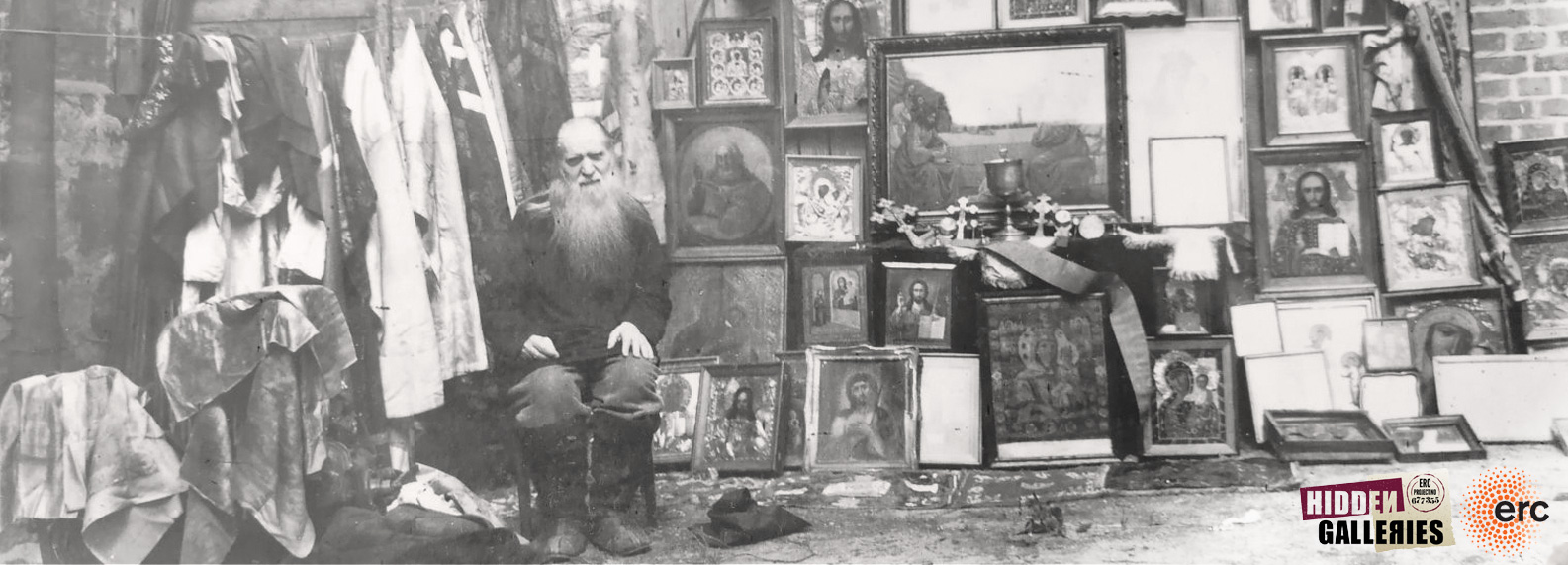National Archives of Romania
Item set
Title
National Archives of Romania
Arhivele Naționale ale României
Description
1. History of Foundation
The National Archives of Romania (ANR), known until 1996 as the State Archives, were officially created in 1862, after the 1859 unification of Moldova and Wallachia under Alexandru Ioan Cuza’s rule. The institution was and still is headquartered in Bucharest. Nowadays, it is subordinated to the Ministry of Internal Affairs. There are 42 regional branches, one in each county of Romania and one in Bucharest (holding documents pertaining specifically to the city).
2. Legal Commission and Task
In accordance with Law 16/1996, the National Archives have the following tasks: to implement measures meant to help with the managing of the archives; to inventory, select and preserve the archival documents; to preserve the documents on microfilms; to administrate the archival data base; to edit the „Revista Arhivelor” journal, as well as other specialised publications; to ensure the training of the archivists; to authorize the temporary relocation of certain archival documents for scientific and cultural purposes; to organize and participate at international conferences for archivists; to ensure the safety and protection of the documents.
3. Material relevant to the study of religions
One of the most important structures within the National Archives is The Service of the Historical and Central National Archives (ANIC), which functions as a subordinated structure. It contains more than 70 kilometers of archival documents, organized in more than 1150 collections and archival fonds, as follows: collections of documents dating from the medieval period, collections of seals, collections of personal and family documents, collections of microfilms, fonds of judicial, economic and research institutions, collections of photographies, sketches, plans, archival fonds relating to the central organizations within the former Romanian Communist Party.
Materials related to church issues, as well as family collections are some of the most requested to be researched. Religion and religious issues are covered in the files of the Ministry of Cults and Arts Fond. The fond contains laws, decisions, statements, reports, lists and other similar documents referring to religious issues. The documents reflect the activity of the Ministry between 1948 and 1983, as well as the activity of the various religious communities, referred to as sects, such as the neo-protestant communities, the Greek Catholic Church, the Old Calendarists and so on. Other fonds that contain materials relevant to the study of religions are: Direcția Generală a Poliției (DGP)-The General Police Division, Inspectoratul Regional de Jandarmi-The Regional Gendarmerie Inspectorate, Direcția Generală a Poliției și Siguranței Generale- The General Police and Siguranța Division, Inspectoratul General al Jandarmeriei- The General Gendarmerie Inspectorate. These fonds mostly contain laws, orders, reports, informative notes written by Siguranța agents, interogations, personal correspondence, confiscated photos, propaganda brochures, newspaper clips, information about the state of mind of the population, the activity of religious communities and sects, such as Adventists, Baptists, Old Calendarists, Inochentists.
More details about these fonds can be found here:
The National Archives of Romania (ANR), known until 1996 as the State Archives, were officially created in 1862, after the 1859 unification of Moldova and Wallachia under Alexandru Ioan Cuza’s rule. The institution was and still is headquartered in Bucharest. Nowadays, it is subordinated to the Ministry of Internal Affairs. There are 42 regional branches, one in each county of Romania and one in Bucharest (holding documents pertaining specifically to the city).
2. Legal Commission and Task
In accordance with Law 16/1996, the National Archives have the following tasks: to implement measures meant to help with the managing of the archives; to inventory, select and preserve the archival documents; to preserve the documents on microfilms; to administrate the archival data base; to edit the „Revista Arhivelor” journal, as well as other specialised publications; to ensure the training of the archivists; to authorize the temporary relocation of certain archival documents for scientific and cultural purposes; to organize and participate at international conferences for archivists; to ensure the safety and protection of the documents.
3. Material relevant to the study of religions
One of the most important structures within the National Archives is The Service of the Historical and Central National Archives (ANIC), which functions as a subordinated structure. It contains more than 70 kilometers of archival documents, organized in more than 1150 collections and archival fonds, as follows: collections of documents dating from the medieval period, collections of seals, collections of personal and family documents, collections of microfilms, fonds of judicial, economic and research institutions, collections of photographies, sketches, plans, archival fonds relating to the central organizations within the former Romanian Communist Party.
Materials related to church issues, as well as family collections are some of the most requested to be researched. Religion and religious issues are covered in the files of the Ministry of Cults and Arts Fond. The fond contains laws, decisions, statements, reports, lists and other similar documents referring to religious issues. The documents reflect the activity of the Ministry between 1948 and 1983, as well as the activity of the various religious communities, referred to as sects, such as the neo-protestant communities, the Greek Catholic Church, the Old Calendarists and so on. Other fonds that contain materials relevant to the study of religions are: Direcția Generală a Poliției (DGP)-The General Police Division, Inspectoratul Regional de Jandarmi-The Regional Gendarmerie Inspectorate, Direcția Generală a Poliției și Siguranței Generale- The General Police and Siguranța Division, Inspectoratul General al Jandarmeriei- The General Gendarmerie Inspectorate. These fonds mostly contain laws, orders, reports, informative notes written by Siguranța agents, interogations, personal correspondence, confiscated photos, propaganda brochures, newspaper clips, information about the state of mind of the population, the activity of religious communities and sects, such as Adventists, Baptists, Old Calendarists, Inochentists.
More details about these fonds can be found here:
4. Access for Researchers
Access to the archive is open to researchers and is free. The researcher has to fill in a research application, which can be also found online, and they will receive a research permit that is usually issued on the spot.
More information can be found here:
Items
-
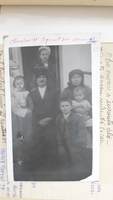
Photos confiscated from Seventh-Day Adventist Soldier Romania
The first image is a photograph of Ignat Neculai and his family from Moșna, Falciu county. He is photographed with his wife, and four children, one of whom is in regional dress. Ignat’s name is written on the edge of the photo. The other image is a photograph of some soldiers, Sergeant Gheorghe Sorin, Captain Costache Jugnaru, and Costache Pițu, from Battalion I, Regiment 25, Company 4, stationed in Moșna. Their names are also written in pen along the edge of the photograph. The third image is a photographic negative of a group of officers from Iași taken at Christmas. On the back of each it -
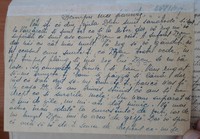
Postcard sent from detention by Romanian Old Calendarist nun
These images show a postcard sent by an Old Calendarist nun to her family whilst in detention. It is a particularly sensitive letter as it conveys the struggles of the nun who appears to have been rejected by her parents for reasons that are not clear from the information we have. The first image shows the face of the postcard and it contains references to the sufferings that the nun had endured for the last two years. From the message that she wrote to her parents, she seems to accuse them of having forgotten about her during these hardships and she reminds them that she is still their daugh -
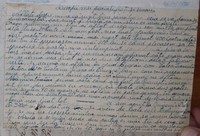
Confiscated postcard written by Romanian Old Calendarist nun
These images show a postcard sent by an Old Calendarist nun to her family in which she describes how she was arrested and sent to an Orthodox Monastery. The postcard was confiscated and attached to a file that contains many such postcards. They all date from approximately same period of time between 1936 and 1937. The first image represents the face of the postcard and includes important details about the fate of the nun. She describes to her family how she was arrested, where she was taken and what the conditions at the Monastery were like. Arrested by the Gendarmes on her way to the post of -

Confiscated Brethren Magazine Bucharest
The images show a Brethren publication entitled Viață și Lumină volume three, issue nine from September 1930. According to the text on the cover, the publication appeared once a month and was edited by Florea Moisescu with administrative facilities in Bucharest under the direction of Gheorghe Teodorescu. Scripture references from the Gospel of John are included under the title, from which the latter is derived. The subscription cost was 60 lei per year in Romania and one dollar in America. This issue, along with two others, were included in the file composed by the General Police Division -

Confiscated postcard of Old Calendarists in Bălți County
This photograph, reproduced as a postcard, was confiscated by the police in 1936, from Pavel Caras, a former monk, who was wandering the villages in Bessarabia distributing these post cards to people. The photo was taken during the 1930s in Albineț, Bessarabia(today Republic of Moldova), which was one of the most important centres of Old Calendarist activity during the period. It depicts the Old Calendarists from Albineț standing in front of their church which appears to be under construction. The photo contains a small description in the lower right hand corner which states: ”In memory of t -
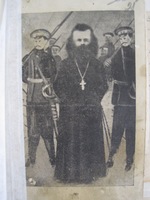
Inochentist postcard-icons Transnistria
The images show postcards and mass produced photographs confiscated from a group of arrested Inochentists in February 1942 in the village of Cuibușor, in Romanian-occupied Transnistria. Image 1 and 2 show the front and reverse of a postcard. On the front, the monk Inochentie (1875-1917) is shown in a scene from his vernacular hagiography in which he is under arrest, surrounded by Tsarist soldiers after his attempted to escape from exile on Solovetsky island. The reverse of the postcard, comprises short quotes and adaptations from the New Testament. Here text and image were configured in a rel
